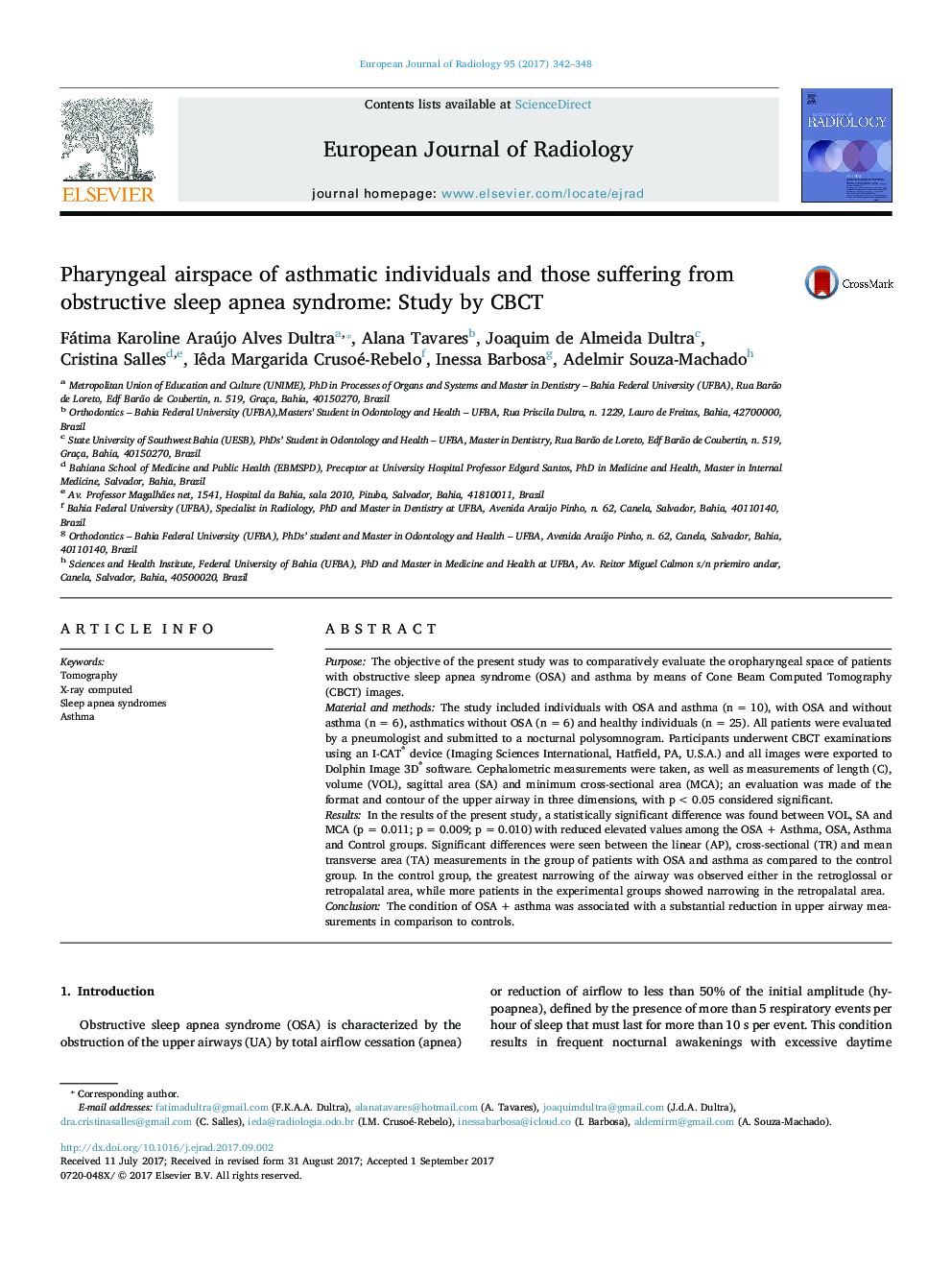| Article ID | Journal | Published Year | Pages | File Type |
|---|---|---|---|---|
| 5726011 | European Journal of Radiology | 2017 | 7 Pages |
â¢Respiratory disorders, such as OSA, asthma and OSA, directly influence the dimensions, as well as morphology, of the airways.â¢A reduction in airway dimensions was observed in individuals with OSA, asthma and those with OSA and asthma in comparison to the control group.â¢The reduction of dimensions was found to be more expressive in individuals who presented an association between asthma and OSA.
PurposeThe objective of the present study was to comparatively evaluate the oropharyngeal space of patients with obstructive sleep apnea syndrome (OSA) and asthma by means of Cone Beam Computed Tomography (CBCT) images.Material and methodsThe study included individuals with OSA and asthma (n = 10), with OSA and without asthma (n = 6), asthmatics without OSA (n = 6) and healthy individuals (n = 25). All patients were evaluated by a pneumologist and submitted to a nocturnal polysomnogram. Participants underwent CBCT examinations using an I-CAT® device (Imaging Sciences International, Hatfield, PA, U.S.A.) and all images were exported to Dolphin Image 3D® software. Cephalometric measurements were taken, as well as measurements of length (C), volume (VOL), sagittal area (SA) and minimum cross-sectional area (MCA); an evaluation was made of the format and contour of the upper airway in three dimensions, with p < 0.05 considered significant.ResultsIn the results of the present study, a statistically significant difference was found between VOL, SA and MCA (p = 0.011; p = 0.009; p = 0.010) with reduced elevated values among the OSA + Asthma, OSA, Asthma and Control groups. Significant differences were seen between the linear (AP), cross-sectional (TR) and mean transverse area (TA) measurements in the group of patients with OSA and asthma as compared to the control group. In the control group, the greatest narrowing of the airway was observed either in the retroglossal or retropalatal area, while more patients in the experimental groups showed narrowing in the retropalatal area.ConclusionThe condition of OSA + asthma was associated with a substantial reduction in upper airway measurements in comparison to controls.
